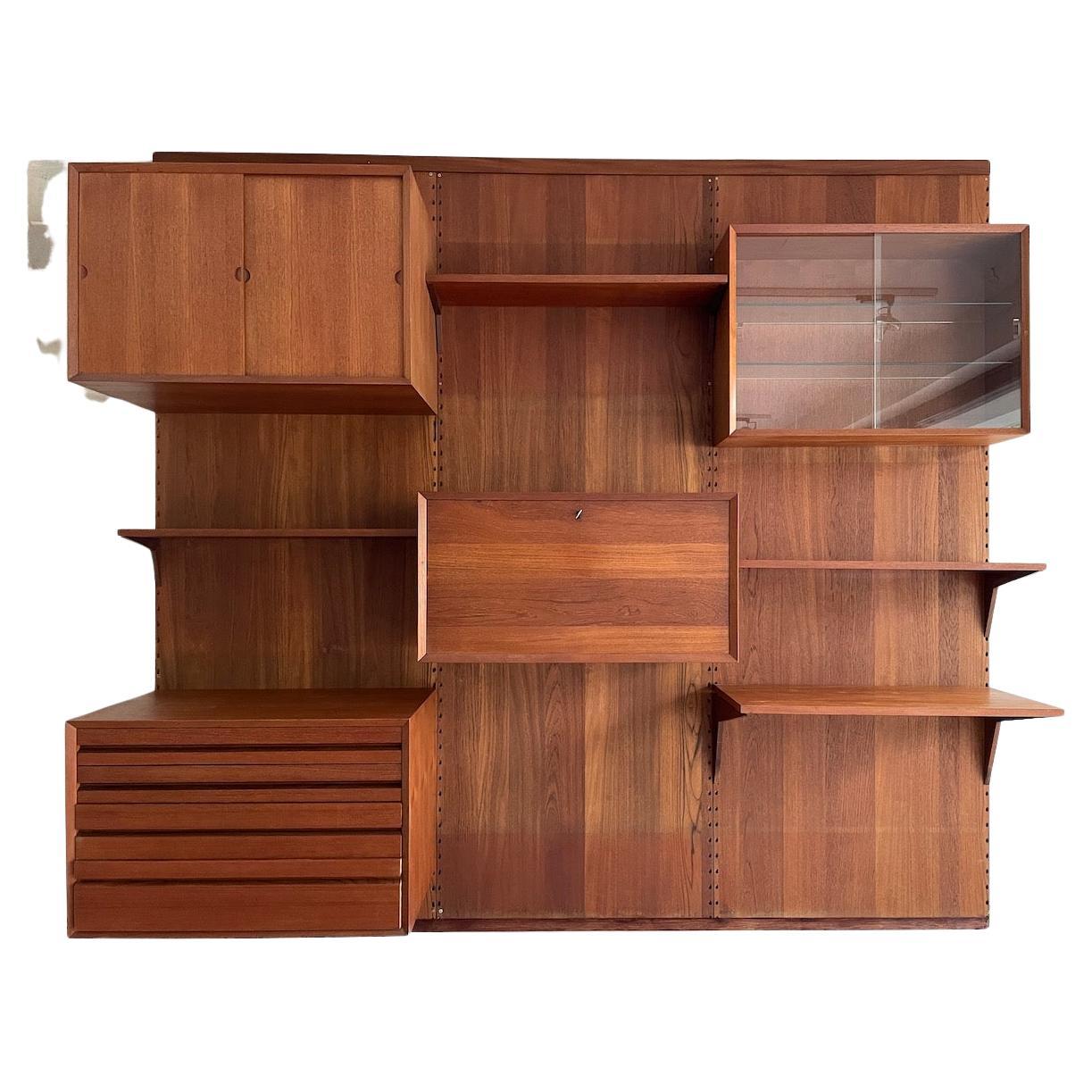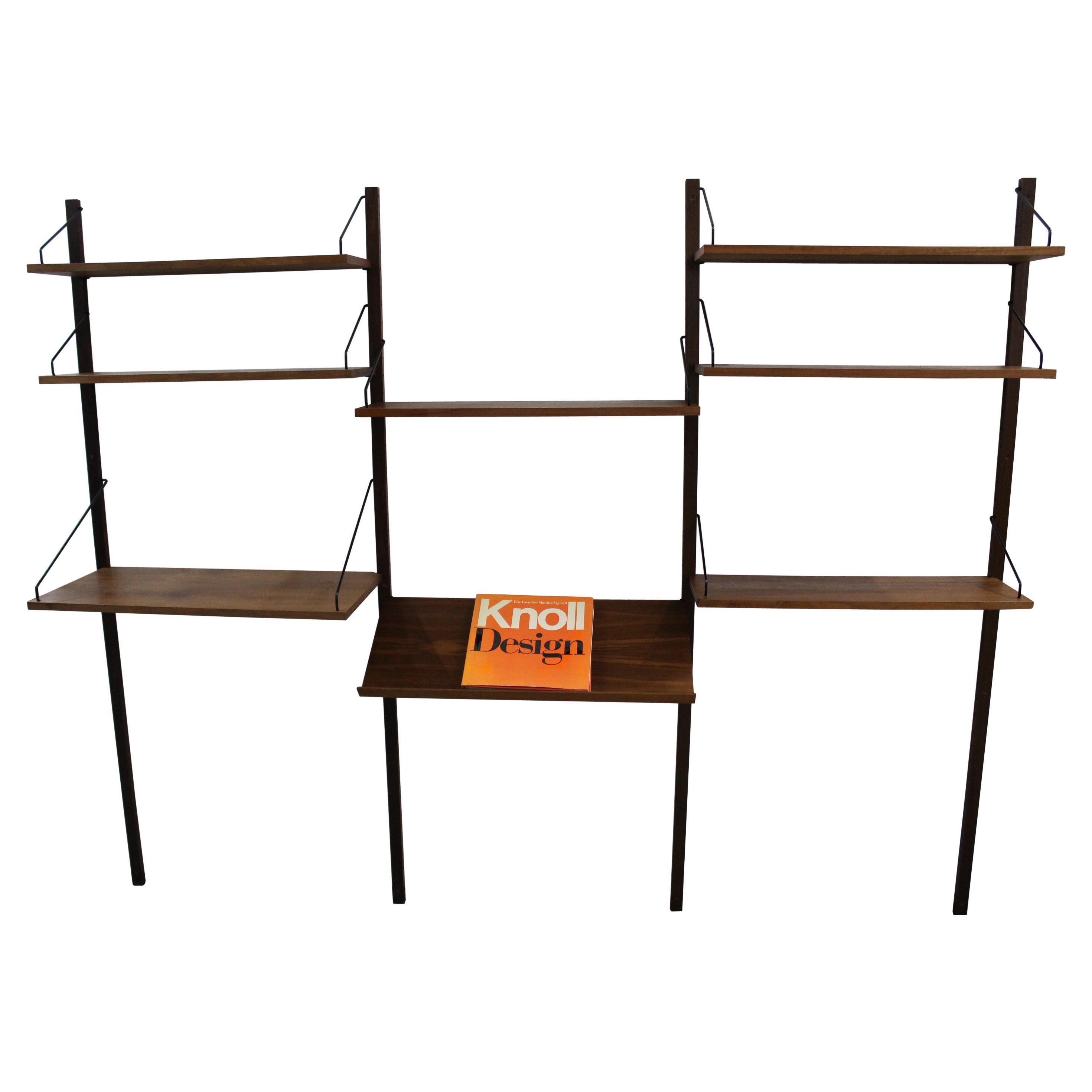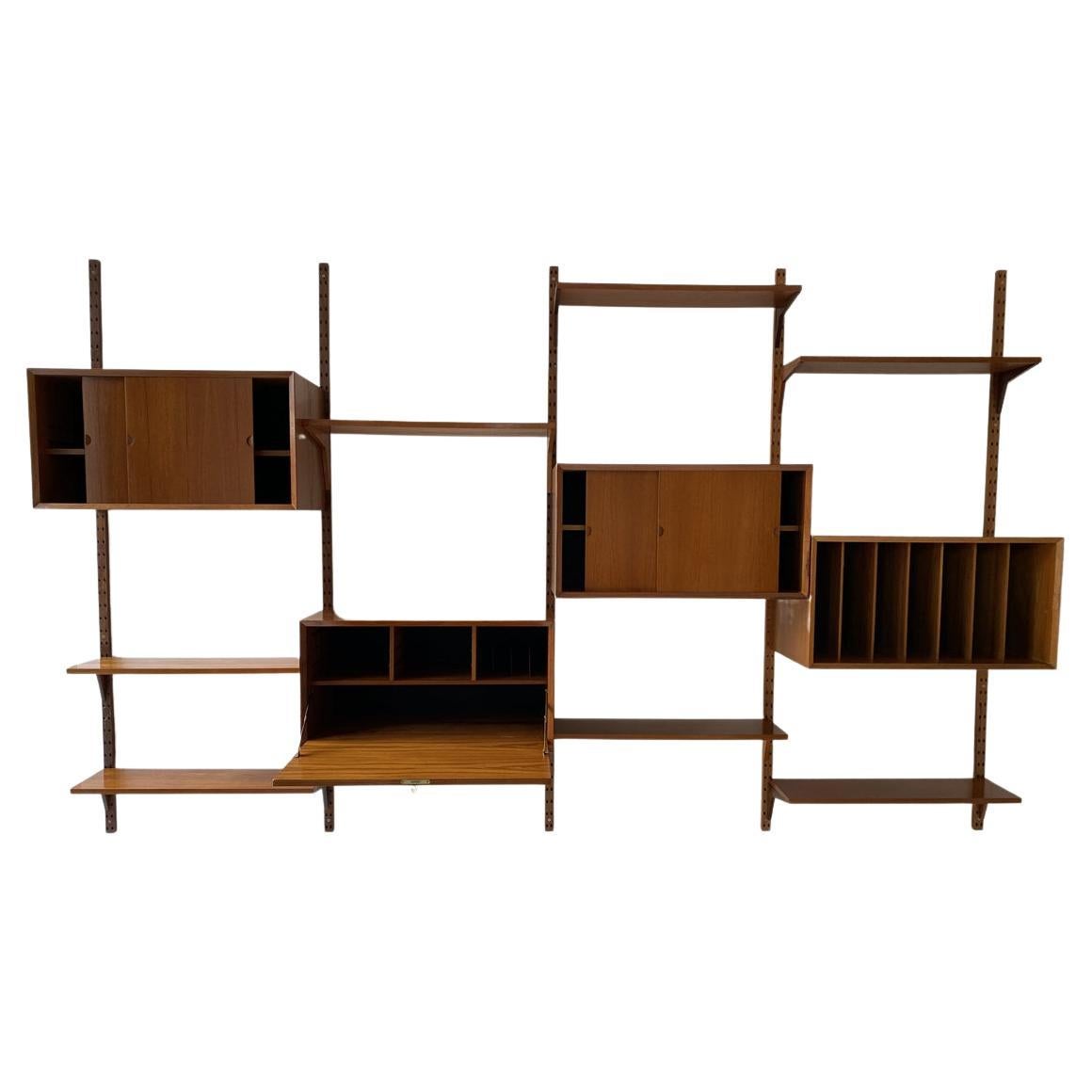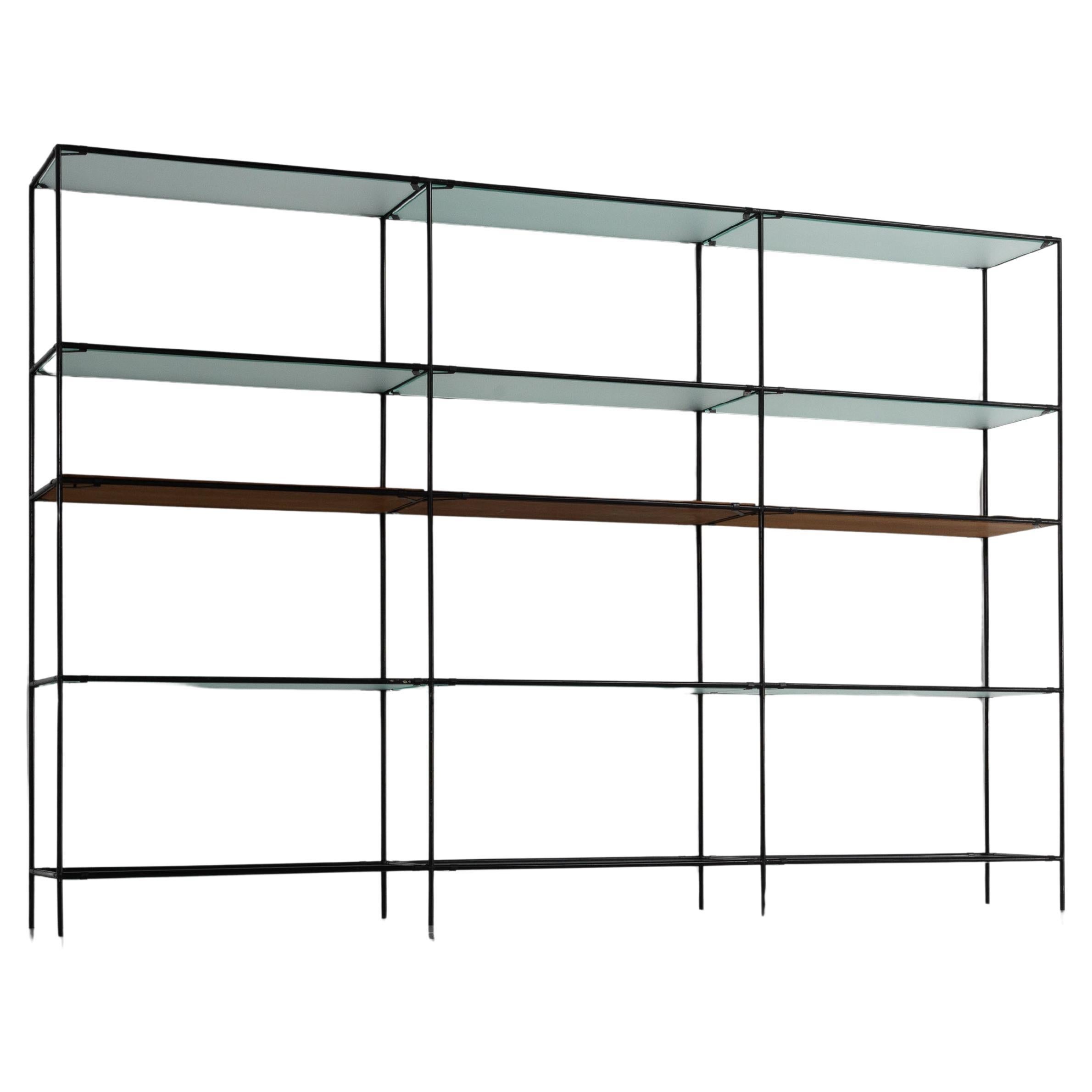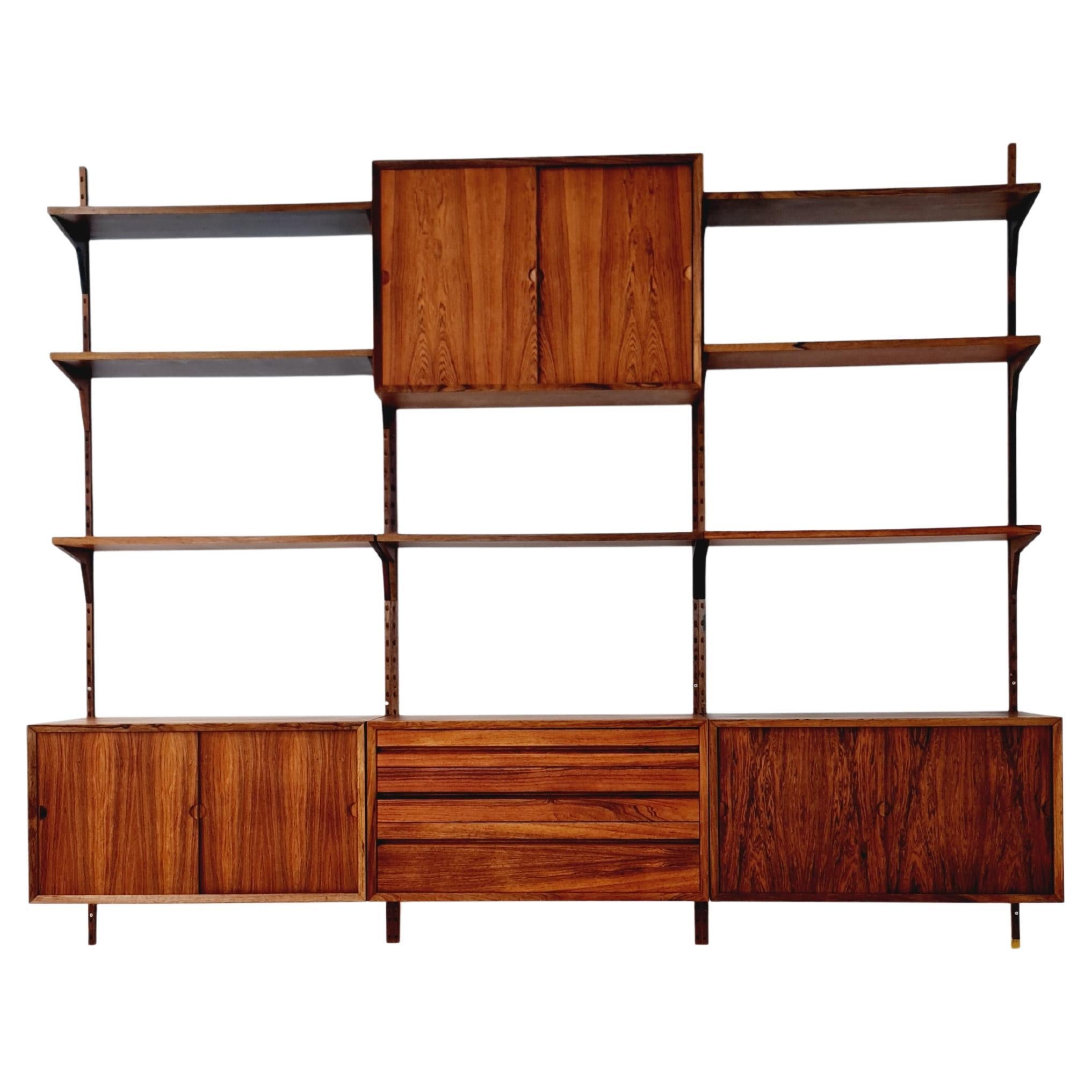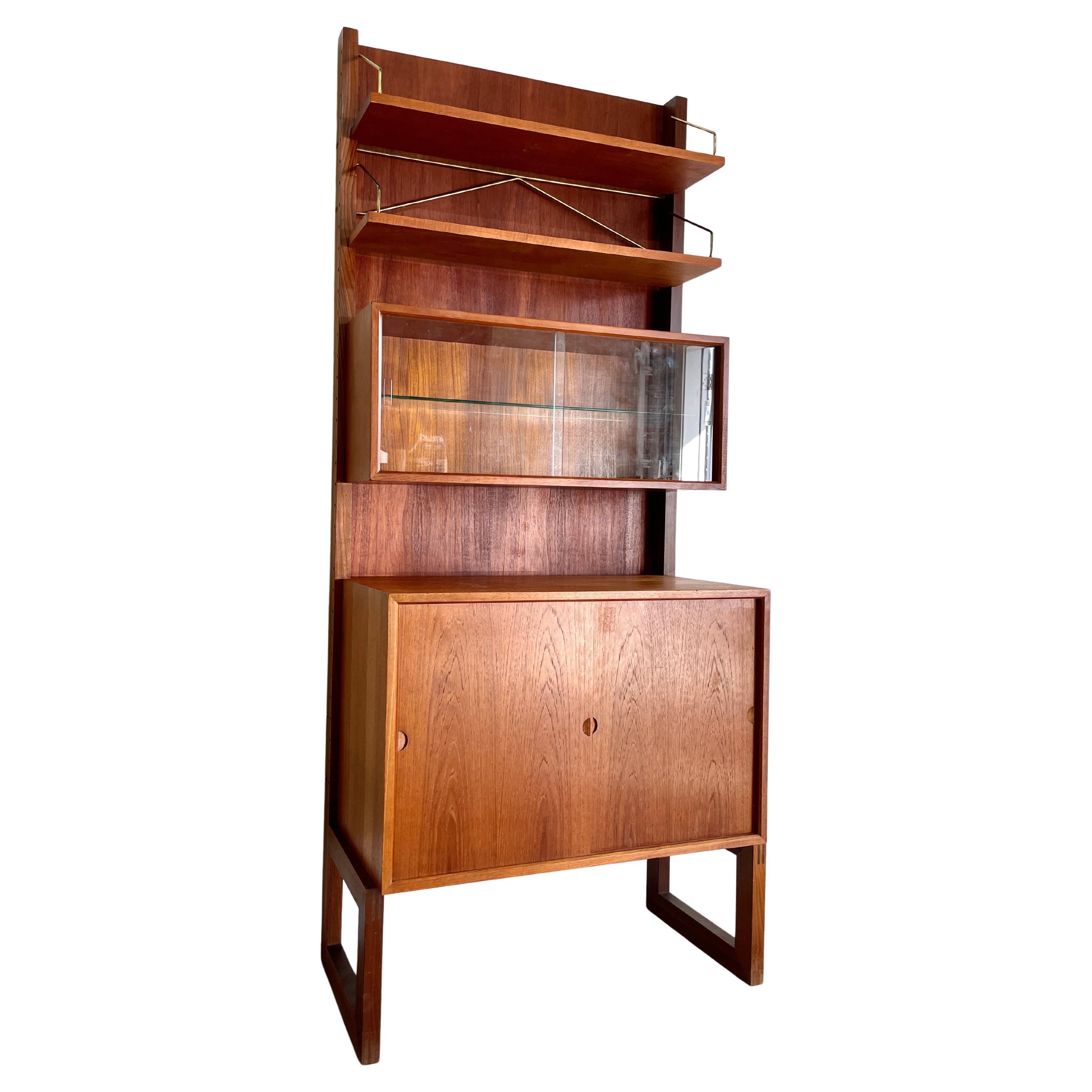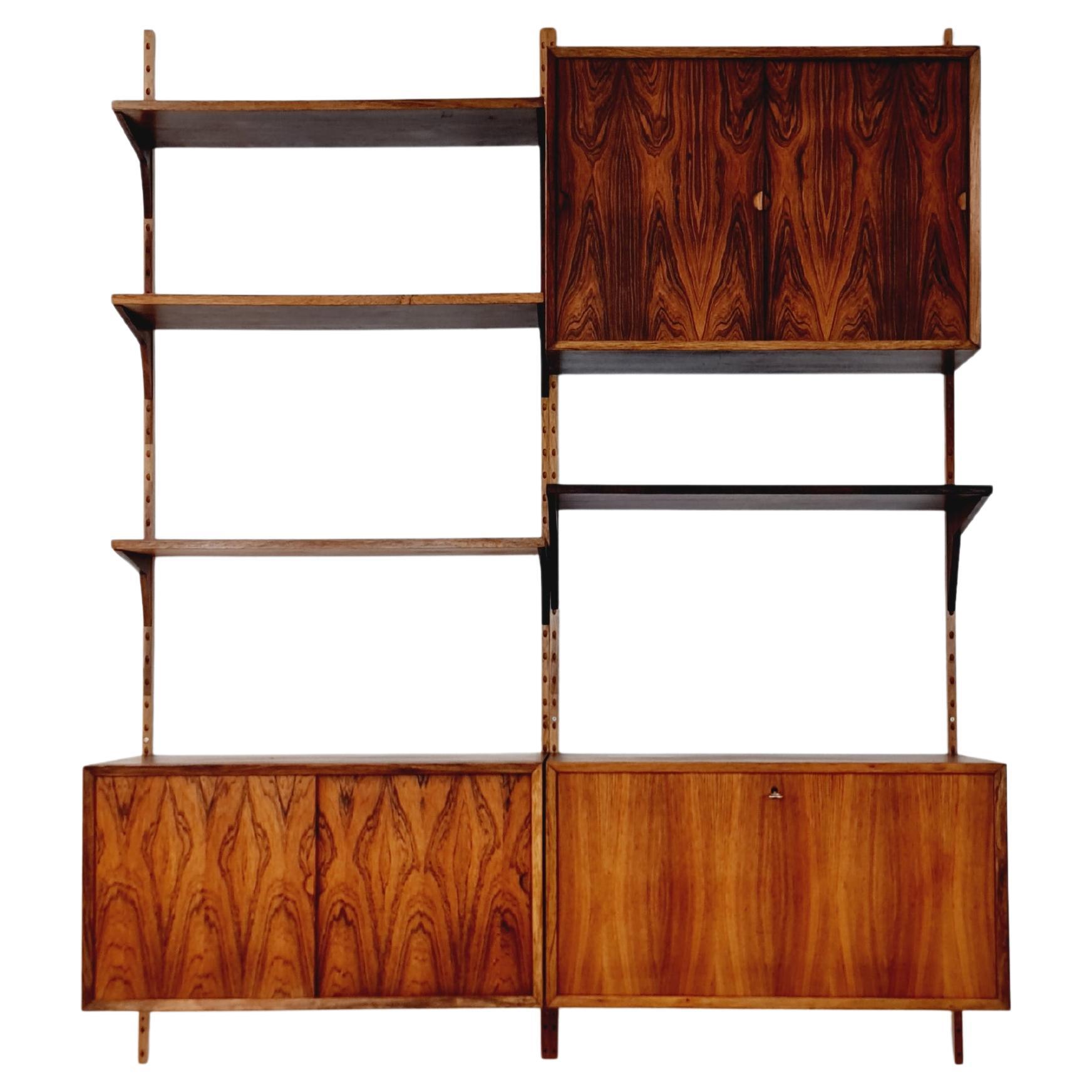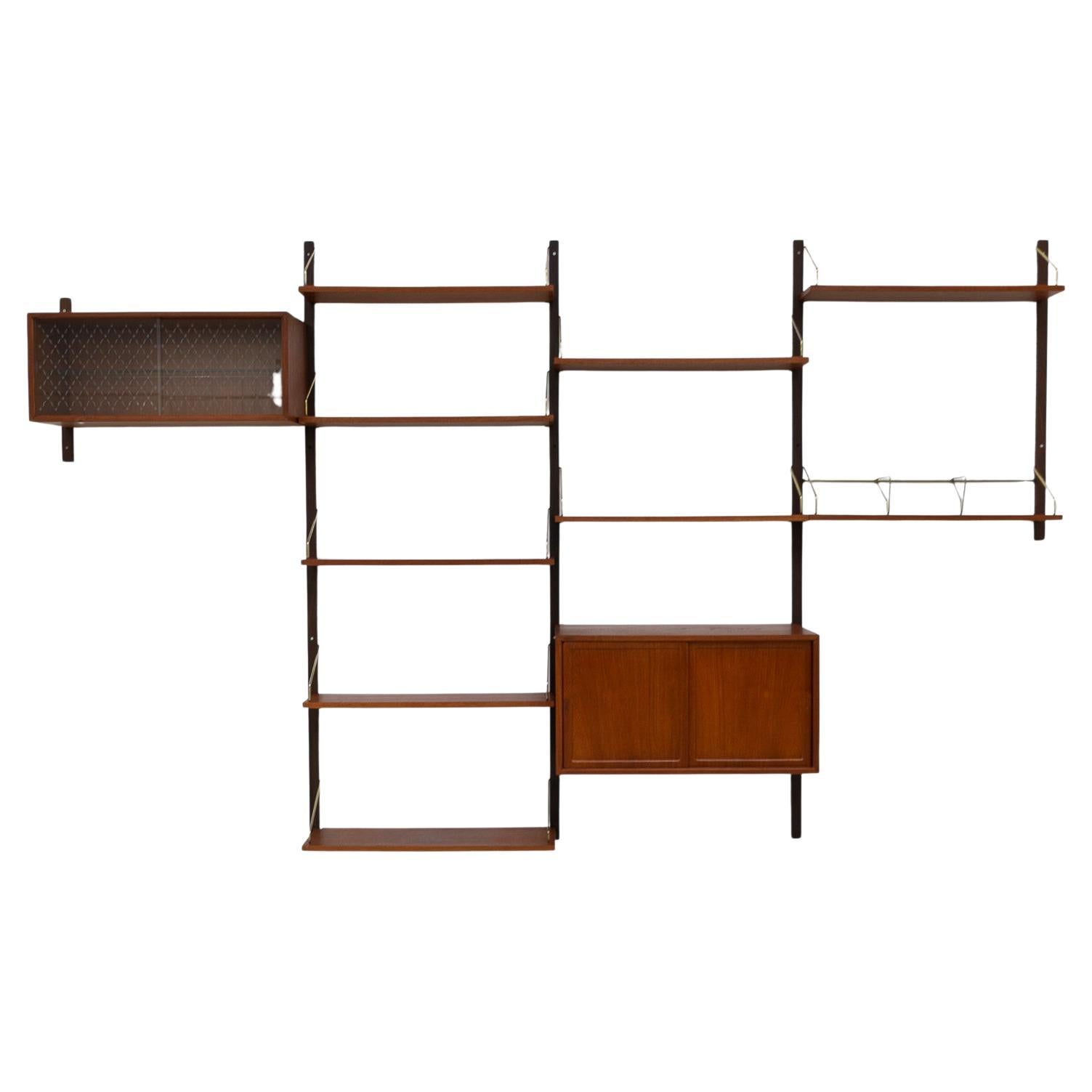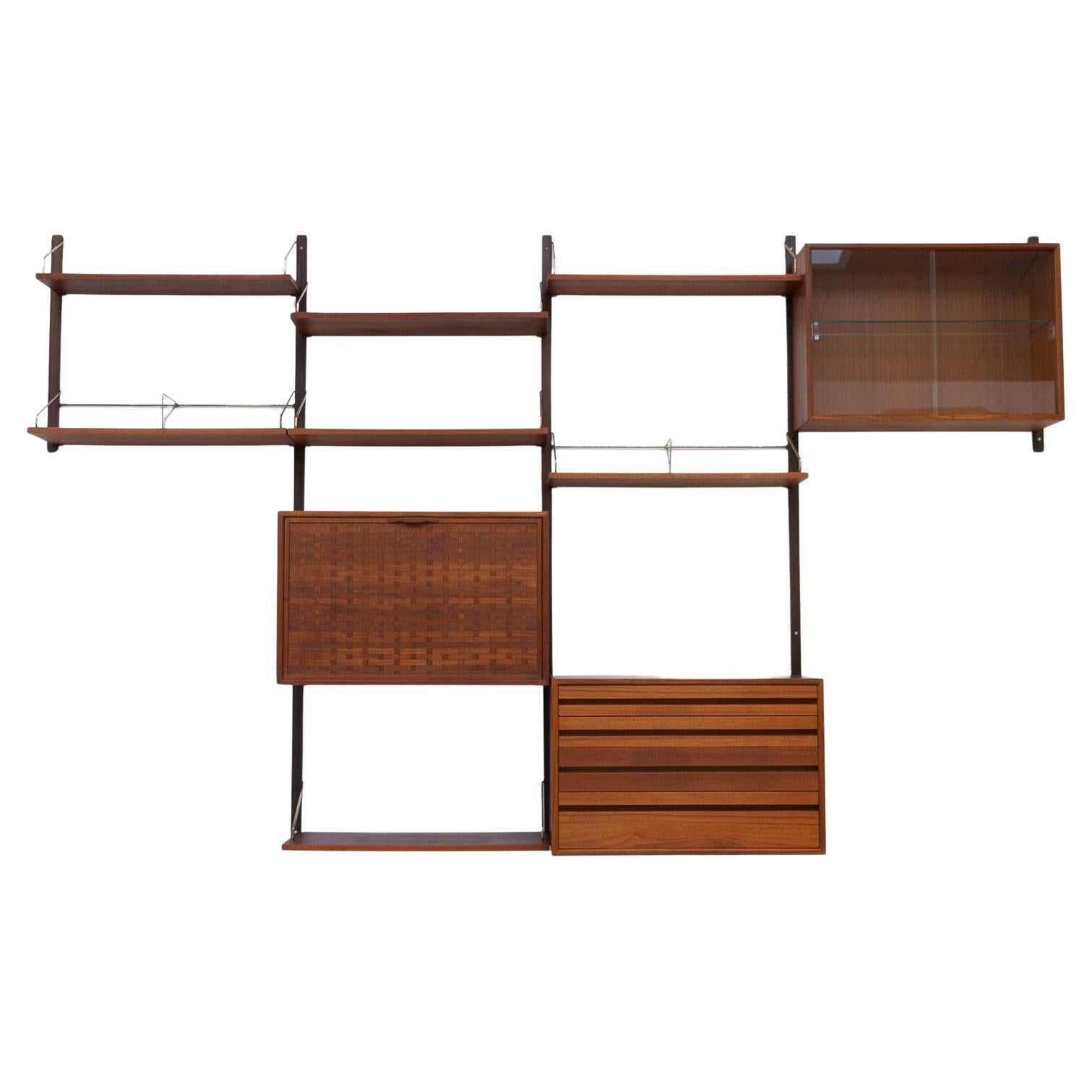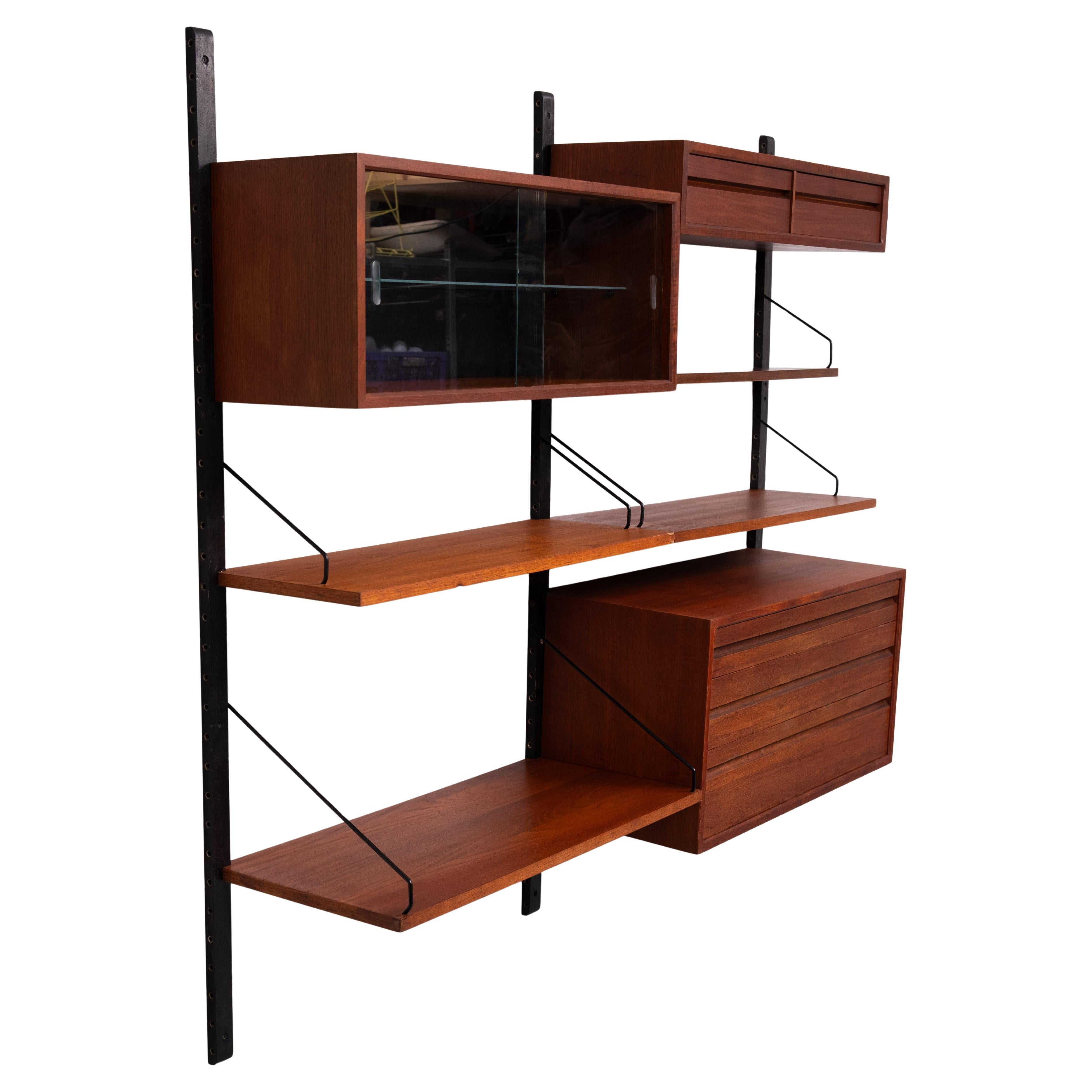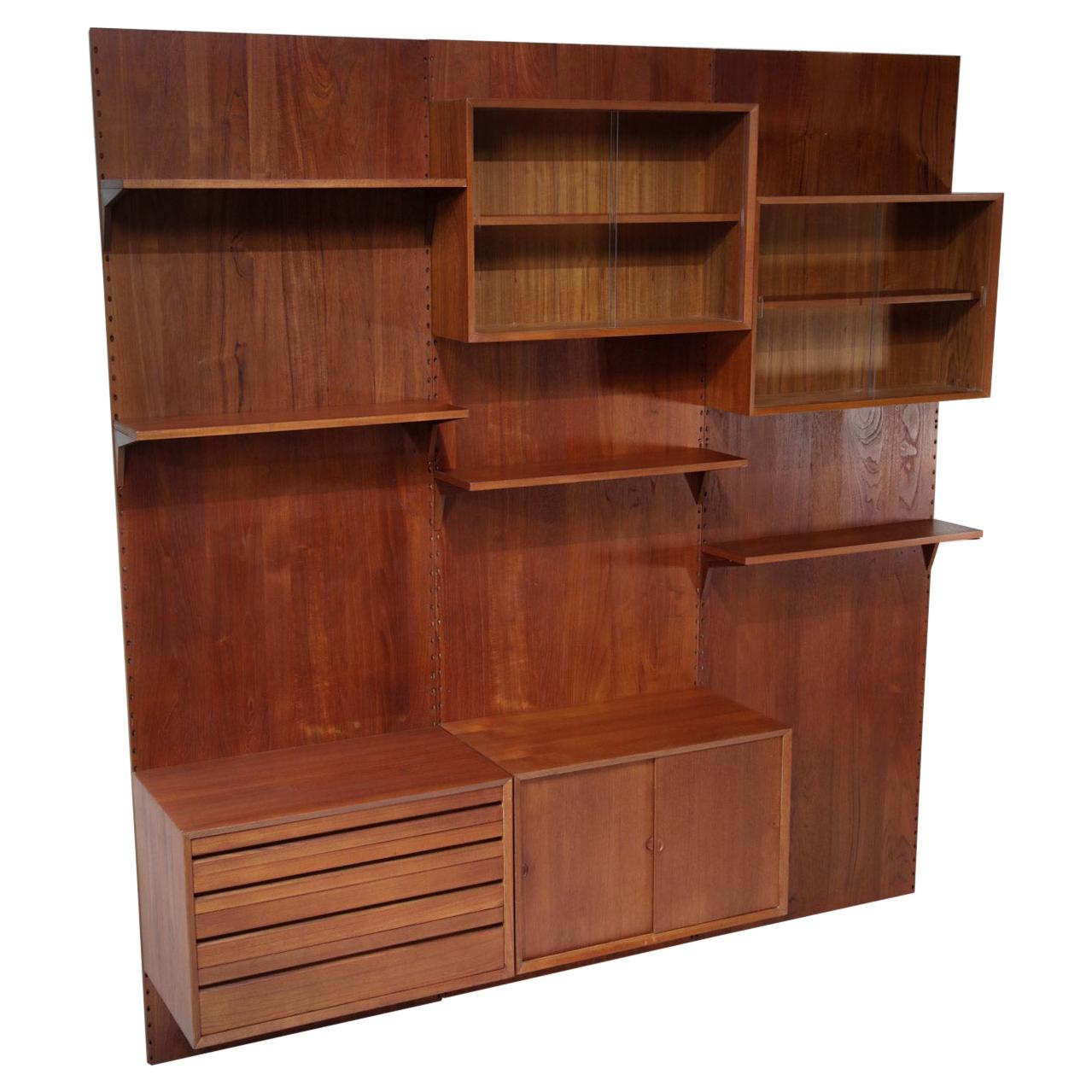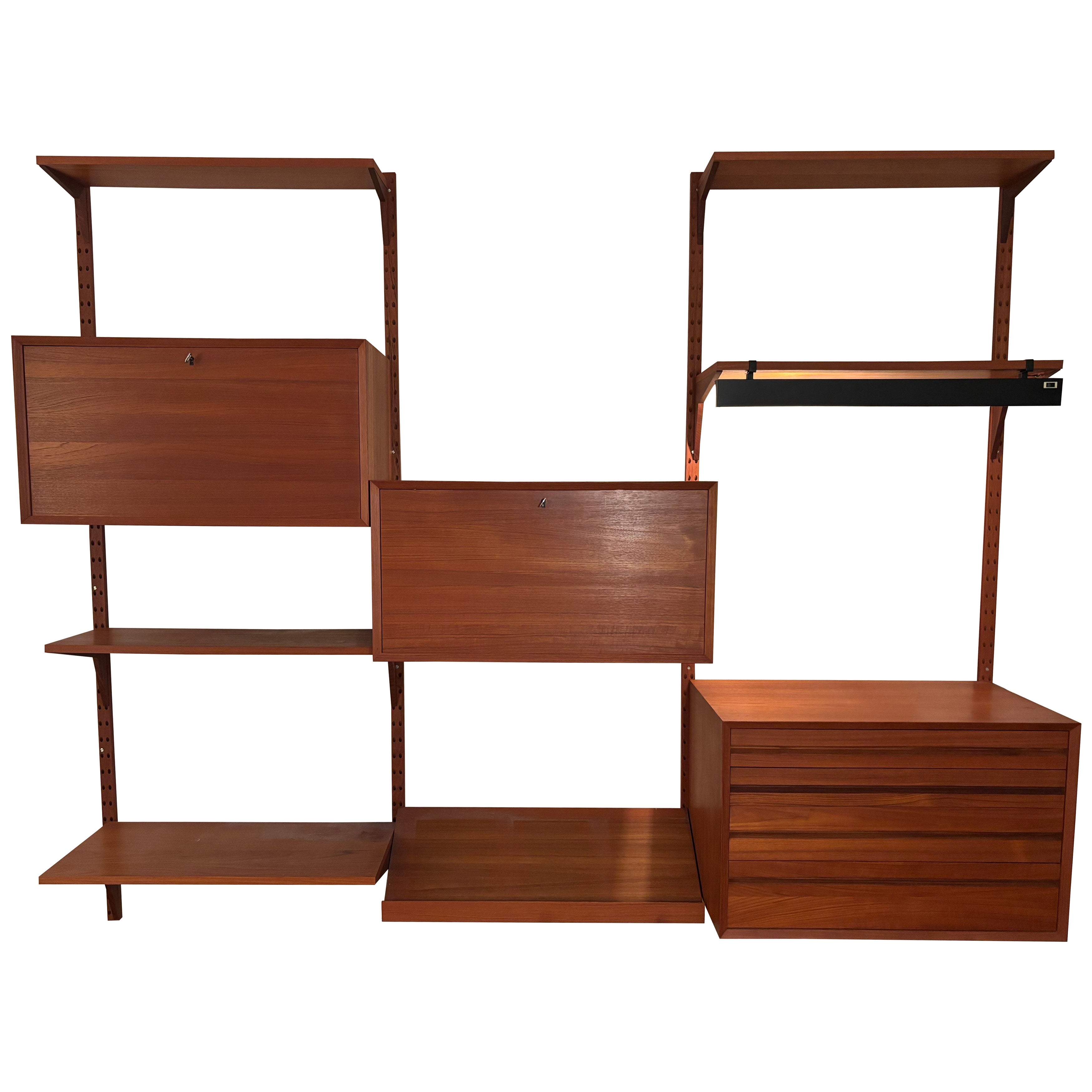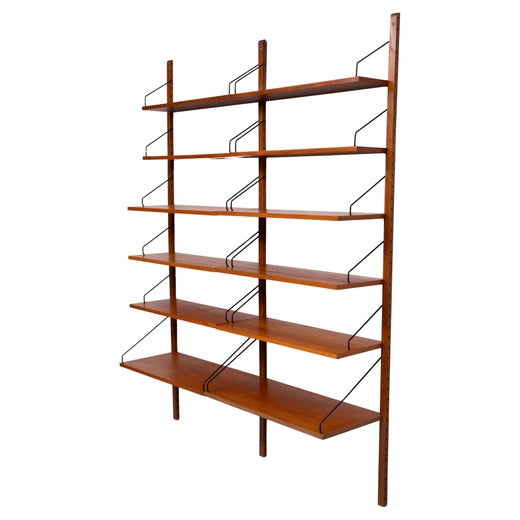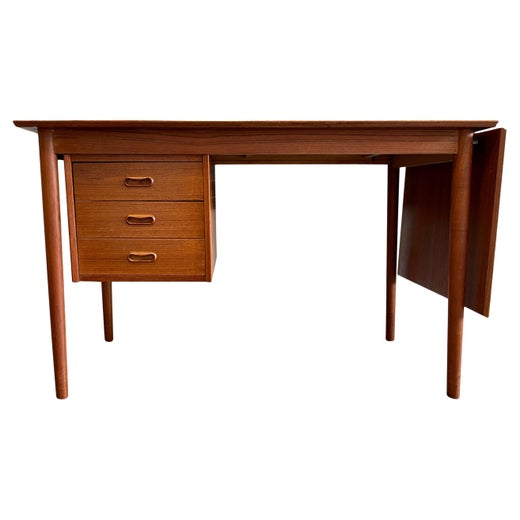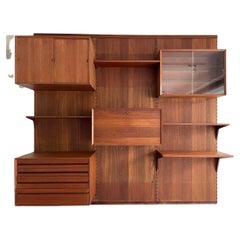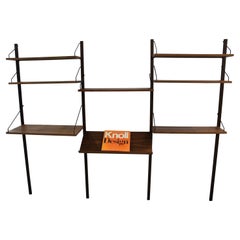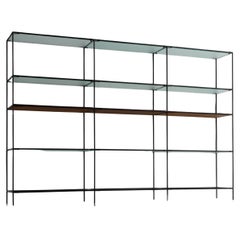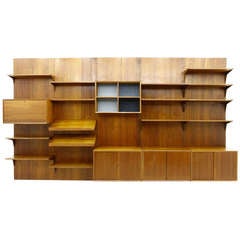
Large Poul Cadovius Wall Unit Teak, Denmark
View Similar Items
Large Poul Cadovius Wall Unit Teak, Denmark
About the Item
- Creator:Arne Vodder (Maker),Poul Cadovius (Designer)
- Dimensions:Height: 90.56 in (230 cm)Width: 157.49 in (400 cm)
- Style:Mid-Century Modern (Of the Period)
- Materials and Techniques:
- Place of Origin:
- Period:
- Date of Manufacture:ca. 1972
- Condition:Wear consistent with age and use.
- Seller Location:Frankfurt / Dreieich, DE
- Reference Number:1stDibs: LU9808955990
Poul Cadovius
While Poul Cadovius is most famous for his modular floating shelving system, his career in design didn’t actually start with wall units.
Born just outside of Copenhagen in 1911, Cadovius began manufacturing window treatments in the 1940s with his partner, Hother Brønner. He soon turned his focus from Venetian blinds to furniture, finding success designing svelte pieces in teak, a richly colored hardwood favored by the Danish mid-century modernists.
In 1945, Cadovius founded the furniture manufacturer Royal System with his designs, including the 1948 Royal System shelving unit, a space-saving solution that underscored Cadovius’s penchant for problem-solving in a multifunctional way. Rather than balance shelves on wooden or metal legs, it held them to the wall with brackets.
Cadovius followed the Royal System shelving unit with the System Ultra in 1957, the System Cado in 1960 and the System Abstracta, which was installed throughout the exhibition halls of the 1962 Cologne Furniture Fair. All expanded on his idea of wall-mounted shelving that saved space while offering functionality, allowing for limitless combinations of storage, shelves, work surfaces and other units. The Royal System proved to be especially popular and is still produced by Danish furniture brand dk3 today, with early models continuing to be in demand.
Along with the shelving systems, Cadovius designed everything from lounge chairs to mushroom-shaped bus shelters, and he held over 400 patents. In addition to being a designer, he was also an entrepreneur with an eye for opportunity, such as purchasing Danish manufacturer France & Søn in the mid-1960s and folded it into Cado, a company he founded years earlier. He used this as an occasion to experiment with his designs, conceiving such unusual pieces as an aluminum-based dining table topped with rosewood and hand-painted by artist Susan Fjedldoe Mygge.
Cadovius’s innovations in shelving continued throughout his career, with examples like the sculptural Butterfly shelf and vertical pieces mixing shelving and storage. In 2018, to celebrate the 70th anniversary of the Royal System, dk3 reissued the celebrated shelving system as well as a more compact version reimagined for 21st-century homes.
Find a collection of vintage Poul Cadovius storage cabinets, seating and other furniture on 1stDibs.
Arne Vodder
Along with Vernor Panton, cabinetmaker and architect Arne Vodder was a leading light of what might be called the “second generation” of forward-thinking 20th-century Danish furniture designers — those who, following in the footsteps of Hans Wegner, Arne Jacobsen, Finn Juhl and others, first applied the skills, traditions and philosophical tenets of Scandinavian craftsmanship to a modern furniture idiom.
Vodder was a graduate student in architecture trained by Juhl, a pioneer of furniture design credited with igniting the Scandinavian modernist movement that swept like wildfire across the United States in the postwar era. Vodder made his mark in the 1960s, when modern design had gained wide acceptance, particularly in the business world. Accordingly, many of Vodder's chairs, created for manufacturers such as France & Søn, Fritz Hansen and Sibast, are quiet in form — projecting an air of sturdiness and strength, rather than avant-garde styling.
Vodder’s aesthetic flair is very pronounced in his vintage cabinets and storage pieces — sideboards, bookcases, credenzas and buffets. In such pieces, the designer liked to play with asymmetry.
Vodder’s bookcases often have a seemingly random array of variously sized shelves and nooks. A typical Vodder sideboard of the mid-century period — his classic Model 29 case piece is known to collectors — might have four sections, each different in purpose and look: an open stack of vertical shelves, and other cupboards covered with sliding panels in contrasting colored laminates and wood veneers.
As you will see from the works on 1stDibs, Vodder had a sense of what kind of design was appropriate for which space: sobriety in the boardroom; playfulness at home.
Find vintage Arne Vodder furniture for sale on 1stDibs.
You May Also Like
Vintage 1960s French Scandinavian Modern Bookcases
Teak
Mid-20th Century Danish Scandinavian Modern Shelves
Glass, Teak
20th Century Danish Scandinavian Modern Bookcases
Teak
Vintage 1960s Danish Scandinavian Modern Shelves
Metal
Vintage 1960s Danish Mid-Century Modern Shelves
Teak
Mid-20th Century Danish Mid-Century Modern Shelves
Brass
